LG have signed a deal with Google to put some of their mobile services pre-loaded onto its handsets.
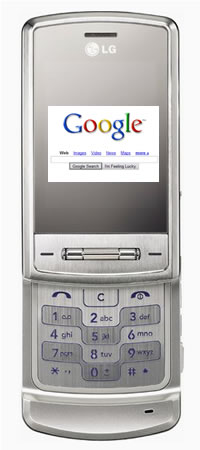 LG have committed to release at least ten new mobile phone and will jointly market them as LG-Google handsets.
LG have committed to release at least ten new mobile phone and will jointly market them as LG-Google handsets.
The apps covered by the deal are Google Maps – which lets people view maps and satellite imagery, find local businesses, and get driving directions, Gmail – the Java-driven, mobile focused version of their email service and Blogger Mobile – which, err … lets you blog while on the move, using images taken from the mobile phone.
Mr. Paul Bae, Vice President of the Product Planning Team at LG Electronics Mobile Communications Company really wants us all to know that “LG’s mobile devices, combined with Google, will provide consumers with easy access to their favourite Internet services even without a PC and make it easy for them to stay connected while in motion.” Wooo!
As we know LG don’t just do mobile phones, but a whole panoply of electronic bits, with a major focus on the home, so it’s interesting to hear from LG that they’ll be extending their relationship with Google to “develop digitalized home in the future.”
The financial terms of the deal were not revealed, indeed it’s unclear if LG will be sharing the income Google will derive from its advertising.
LG are being a little tarty about this. It’s not too long ago (end of 2006) that they signed a deal with Yahoo to pre-load Yahoo! services, including Yahoo! Go for Mobile 2.0, Yahoo! Mail and Yahoo Messenger on many of its mobile phones. Clearly that wasn’t an exclusive deal and it will have covered different handsets we imagine.
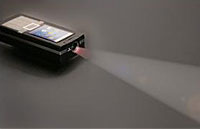 At the CTIA Wireless 2007 show in Orlando, Florida, tech firm Texas Instruments has been giving public demonstrations of its digital light processing (DLP) ‘pico’ projector – a teensy weensy movie projector that’s small enough to wedge into a mobile phone.
At the CTIA Wireless 2007 show in Orlando, Florida, tech firm Texas Instruments has been giving public demonstrations of its digital light processing (DLP) ‘pico’ projector – a teensy weensy movie projector that’s small enough to wedge into a mobile phone.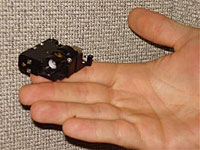 Using the phone projector (“phonejector?” “prophonetor”?”), the mobile phone will eventually be able to beam DVD-quality video on to a screen or a wall, making it a workable portable video player or TV.
Using the phone projector (“phonejector?” “prophonetor”?”), the mobile phone will eventually be able to beam DVD-quality video on to a screen or a wall, making it a workable portable video player or TV.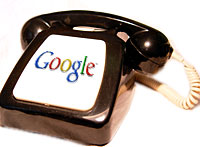 Rumours that Google is working on a mobile phone were given another boost after Richard Windsor, of Nomura brokers, claimed that Google reps at an industry event in Germany had blabbed about such a device.
Rumours that Google is working on a mobile phone were given another boost after Richard Windsor, of Nomura brokers, claimed that Google reps at an industry event in Germany had blabbed about such a device.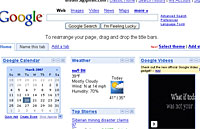 Pundits reckon that Google would be most likely to shuffle into the mobile world under a deal that would let them partner with an existing handset maker and hop on to the network of an existing mobile operator.
Pundits reckon that Google would be most likely to shuffle into the mobile world under a deal that would let them partner with an existing handset maker and hop on to the network of an existing mobile operator. Try as we might, we can’t think of the last time we said to ourselves, “You know what? We could really use a Bluetooth enabled cushion,” but the good news is that if ever such a thought should cross our minds, urbantool.com has the answer.
Try as we might, we can’t think of the last time we said to ourselves, “You know what? We could really use a Bluetooth enabled cushion,” but the good news is that if ever such a thought should cross our minds, urbantool.com has the answer.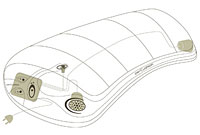 Powered by a rechargeable lithium ionic battery, call status is displayed via a series of LEDs, which indicate if the, err, pillow is in active standby mode or taking an incoming call.
Powered by a rechargeable lithium ionic battery, call status is displayed via a series of LEDs, which indicate if the, err, pillow is in active standby mode or taking an incoming call. Although we couldn’t argue with anyone claiming that it’s the most comfortable phone on the planet, the idea of someone actually sitting at home talking into a cushion would suggest the presence of magic mushrooms to us.
Although we couldn’t argue with anyone claiming that it’s the most comfortable phone on the planet, the idea of someone actually sitting at home talking into a cushion would suggest the presence of magic mushrooms to us.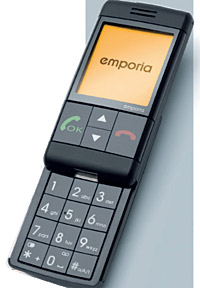 On display at the CeBit hi-tech fair last week was a new mobile phone offering a built-in emergency button.
On display at the CeBit hi-tech fair last week was a new mobile phone offering a built-in emergency button.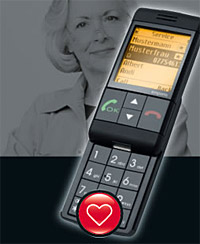 The phone comes with extra loud volume options for speaker and ring tones and has a powerful vibration alert to ensure the owner knows that someone’s calling.
The phone comes with extra loud volume options for speaker and ring tones and has a powerful vibration alert to ensure the owner knows that someone’s calling.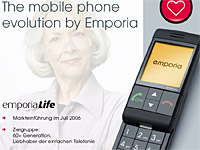 There seems to be some debate about just how old the target market actually is: the
There seems to be some debate about just how old the target market actually is: the  Her guidance to them is to settle on DVB-H (Digital Video Broadcasting for Handhelds), a European led development of the DVB-T (Television) standard that is throughout large areas of Europe.
Her guidance to them is to settle on DVB-H (Digital Video Broadcasting for Handhelds), a European led development of the DVB-T (Television) standard that is throughout large areas of Europe. Sanity appears to have been reached by Vodafone, as they announce a flat-rate of €12/day for data in Europe – but only if accessed from “mobile-enable laptops” from 1 July 2007. It will replace their current per Megabyte service, giving what they say is “practically unlimited data usage,” which is actually up to 50Mb/day.
Sanity appears to have been reached by Vodafone, as they announce a flat-rate of €12/day for data in Europe – but only if accessed from “mobile-enable laptops” from 1 July 2007. It will replace their current per Megabyte service, giving what they say is “practically unlimited data usage,” which is actually up to 50Mb/day.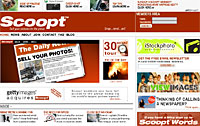 Major news agencies made great use of public camera phone footage after the London 7/7 bombings, with several images
Major news agencies made great use of public camera phone footage after the London 7/7 bombings, with several images  With Getty’s well established media network, amateur snappers should expect increased prospects of shifting their work, although Getty hasn’t commented if the payment share is to remain the same.
With Getty’s well established media network, amateur snappers should expect increased prospects of shifting their work, although Getty hasn’t commented if the payment share is to remain the same.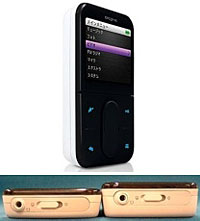 Fresh outta hi-tech Fat Farm, the new Zen Vision M and W models have managed to reduce their bulk by 15% on previous versions while wedging in a bigger hard disk.
Fresh outta hi-tech Fat Farm, the new Zen Vision M and W models have managed to reduce their bulk by 15% on previous versions while wedging in a bigger hard disk.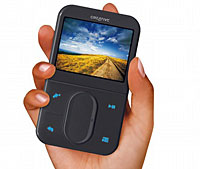 The rather desirable little fella weighs in at a light as heck 170g (and that includes the battery) and comes with a 2.5 inch colour screen.
The rather desirable little fella weighs in at a light as heck 170g (and that includes the battery) and comes with a 2.5 inch colour screen.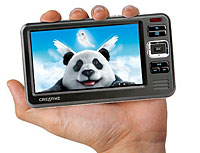 Vision W
Vision W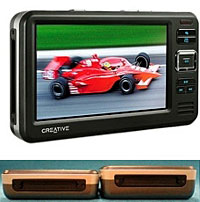 When?
When?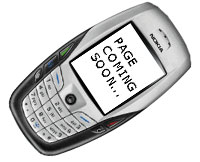 Three Quarters Of Consumers Naffed Off With Mobile Web
Three Quarters Of Consumers Naffed Off With Mobile Web Mercer joined Apple in 1987 and was the lead designer of Version 7 of the Macintosh finder before founding a software tools firm called Pixo which was involved in designing the first version of the iPod user interface.
Mercer joined Apple in 1987 and was the lead designer of Version 7 of the Macintosh finder before founding a software tools firm called Pixo which was involved in designing the first version of the iPod user interface.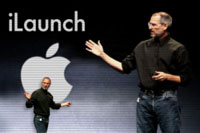 Voice-recognition software, Apple’s most advanced to date, can recite a speech highlighting the features of the device while injecting several clever digs at competitors.
Voice-recognition software, Apple’s most advanced to date, can recite a speech highlighting the features of the device while injecting several clever digs at competitors.